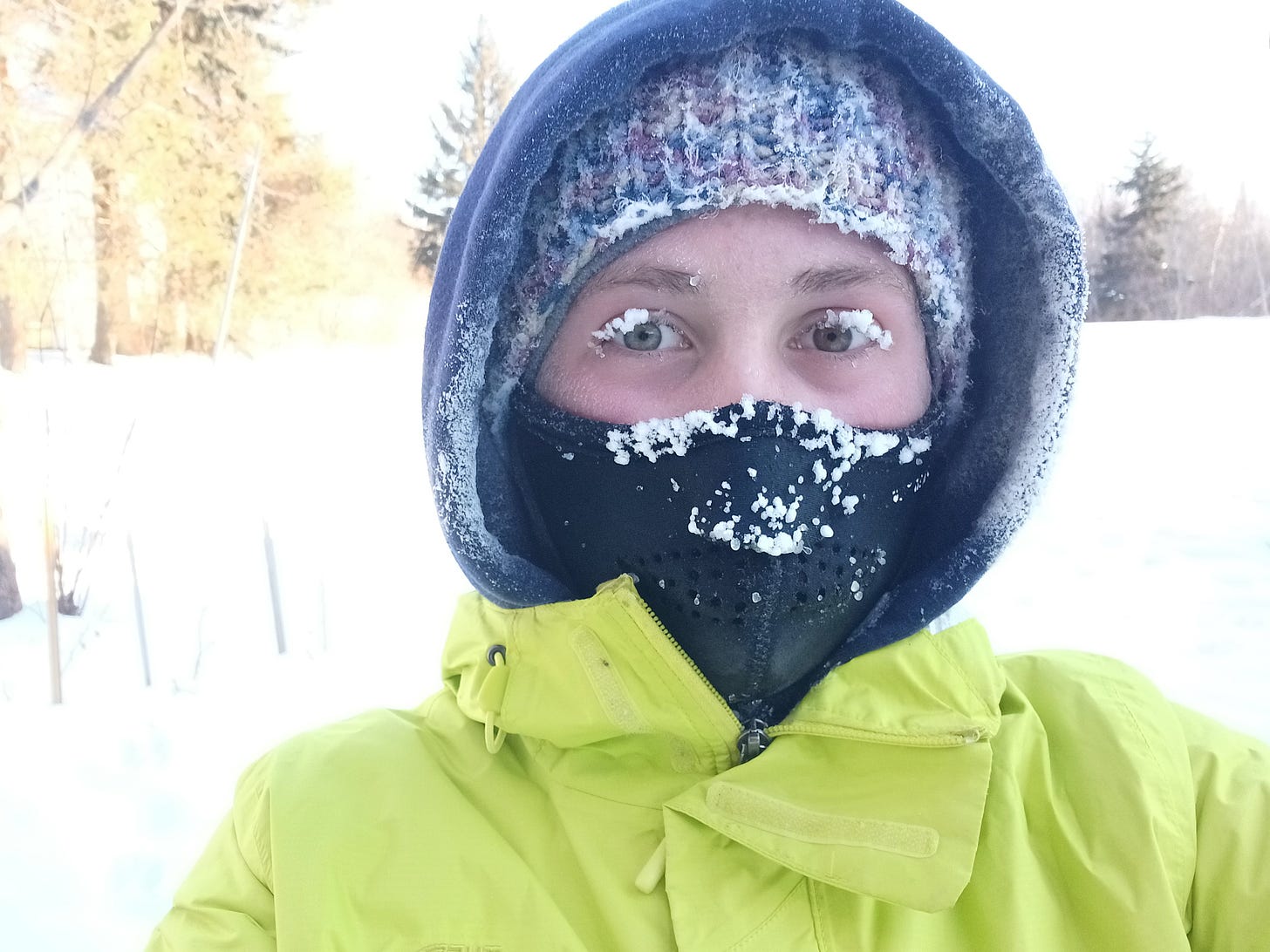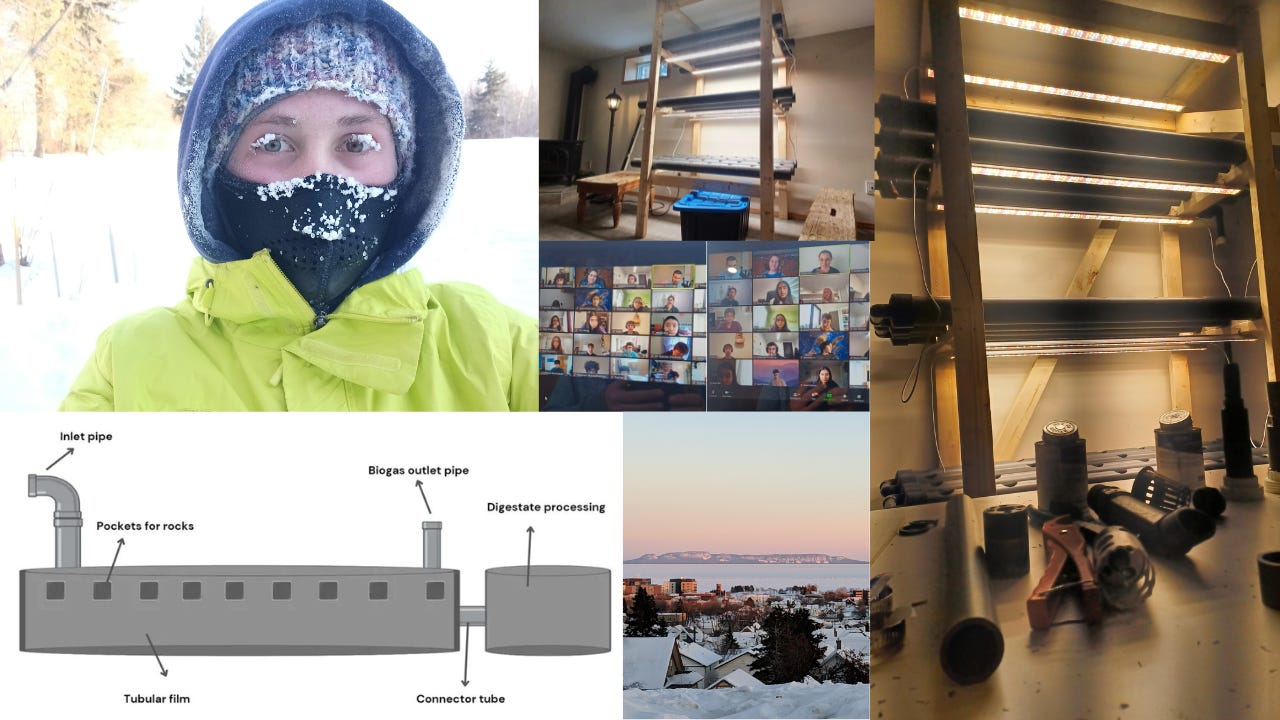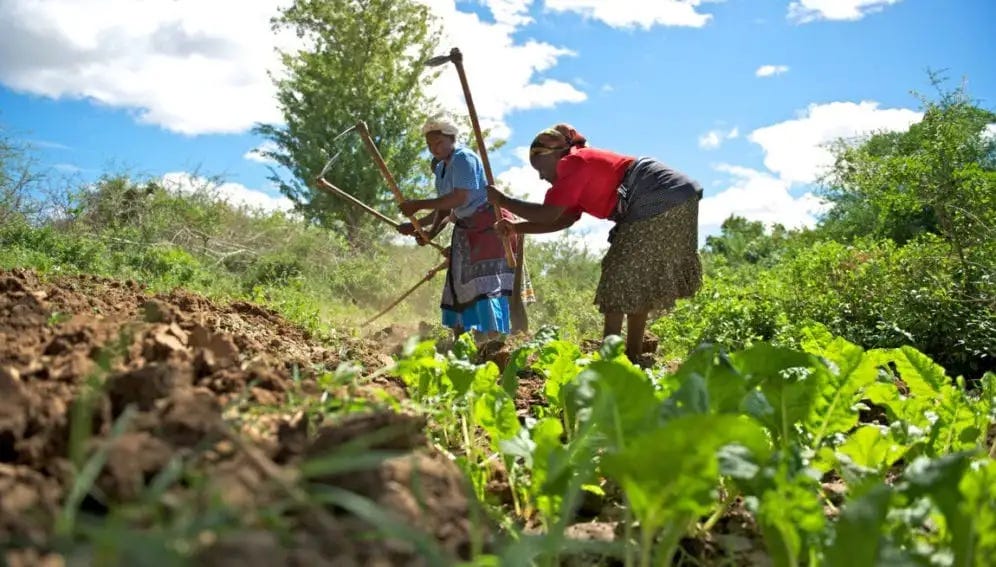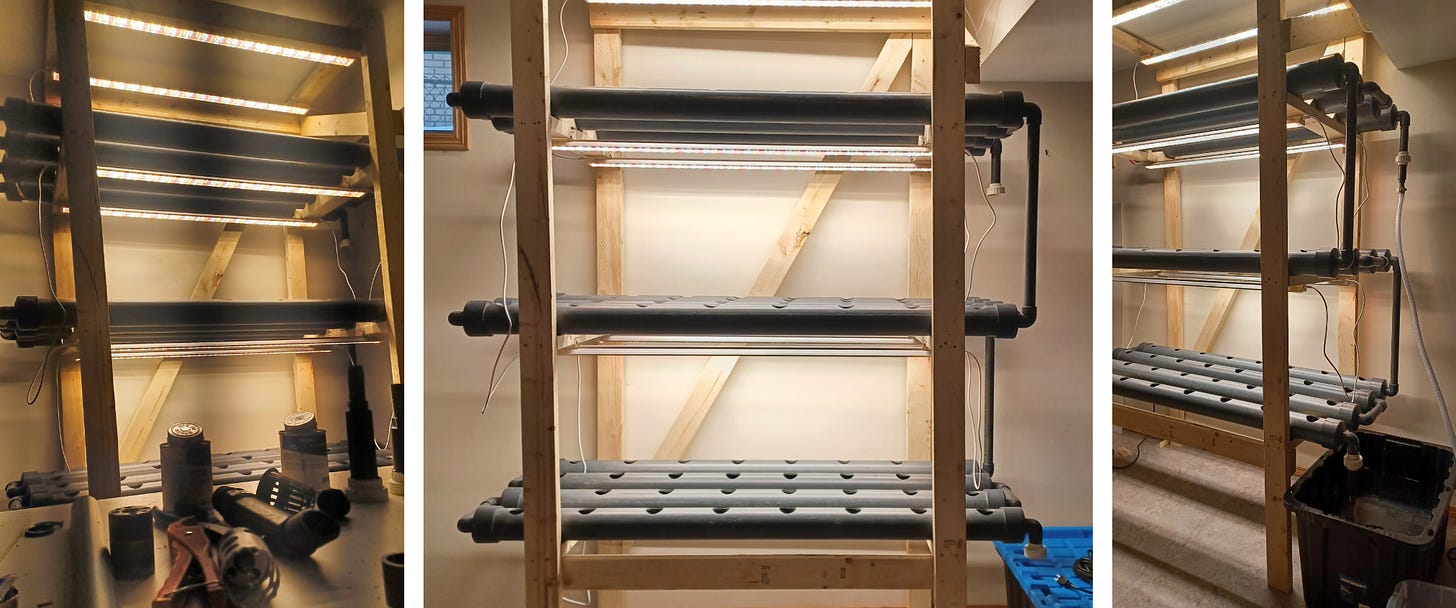Building a hydroponics farm in my basement, researching an alternative to synthetic fertilizer & outdoor adventures at -31°C
January Newsletter
Hi everyone! Wonderful to meet you/see you again! My name is Rachel. I am a 16 y/o activator at TKS working on leveraging biotech to improve yields and livelihoods for small holder farmers in rural Africa. A little about me: I want to actually help people around the world, reduce global suffering and have a social impact, while learning new skills & sciences and navigating this crazy roller coaster called life. I’m the cohost of the TechnoGypsie Podcast, and an ultra runner obsessed with pushing my personal limits and finding out what I’m truly capable of.
Anaerobic Digestion Project
The goal of my research for the past couple months is simple: to find an alternative to synthetic fertilizer that is cheap, environmentally sustainable, and just as effective as synthetic fertilizer.
I have landed on small scale home anaerobic digestors as the best way to achieve this end goal. They’re inexpensive, small scale, environmentally sustainable…everything but effective. So for the month of January I have taken a deep dive into what makes synthetic fertilizer so effective, and how we can replicate this in organic fertilizer.
I found that one of the main factors of fertilizer effectiveness is nutrient content, the amount of N (nitrogen) P (phosphorus) and K (potassium) in synthetic fertilizer largely determines the degree to which the fertilizer will increase yields. Most synthetic fertilizer is 45% N, 20% P and 10% K.
Digestate is 2% N, 1% P and 1% K, which are laughable numbers compared to synthetics.
I have summarized my research about nutrient content of digestate and my idea to use a microalgae bacterium consortium to increase the amount of nutrients in digestate in the article below. (And if you haven’t yet done so, check out the video presentation of my research.)
What if Small Scale Farmers in Sub Saharan Africa Could Create Effective Fertilizer in their Backyards?
Hydroponics System
January was exam month, so I had exams in all my classes (very stressful). But the exciting thing is that after exams I had 3 days off with no school. So I capitalize on those free days to finish my hydroponics system! As you can see from the pictures, everything is complete. After some troubleshooting (like the water pump which was too powerful and pumped too much water into the pipes which overflowed out the top of the pipes), the system has been running smoothly for the past day without any issues.
I am now waiting for the seeds to sprout in peat moss before transferring them to the system.
It has been such a fun experience building this system with my Dad, and I can’t wait until each of its 96 holes are filled with lettuce! It will be a bit of an experiment to find the correct balance of nutrients, pH and pressure that will produce optimal yields.
Hopefully in next month’s newsletter I can show you big heads of lettuce and spinach, and share the video and article that I am making about the why and how of this system.
TechnoGypsie Podcast
Ciara and I had the pleasure of speaking with Hannah Claridge about her work with building neurotech products to solve problems in healthcare. In this conversation we discuss Hannah’s research and work using neurotech to treat Parkinson’s Disease, and the process of bringing a neurotech product to market.
Other cool things
I gave a presentation of my maize project which Damian (amazing TKS director from last year) showed to the team at Bureau de la Recherche et Innovation Lab during a TKS tour of the lab in Ottawa.
I attending the Banff Festival of Mountain Films for the first time and loved every minute of it. My favorite documentary was titled Before They Fall which is about the Fairy Creek protest and the ongoing fight of scientists and Indigenous peoples to protect old growth forests in BC. Before watching this, I wasn’t aware of the extreme importance of old growth forests for ecosystems and biodiversity, and the violence against Indigenous people who are standing up for these important forests.
During our weekly TKS Activate sessions, we had a session I really enjoyed which examined the root cause and correlation between the problems of both tomato farming and second hand clothing waste in Ghana. Both these problems have major implications that many people are unaware of. If you’re interested in learning more, check out the documentaries: The Environmental Disaster that is Fuelled by Used Clothes and Fast Fashion and Tomatoes and greed – the exodus of Ghana's farmers.
This month I began working on the project I mentioned in last month’s newsletter for wpb.world. I am working with Apoorva and Graeme to create a problem profile about malnutrition and stunting for every country in the world, starting with the UN LTD countries. The first step I am currently working on is data collection (finding data for the amount of food produced in each country, the access of food, the distribution, nutrient content of food and much more). This project will take several months with the end result being high quality problem profiles of malnutrition which will pinpoint suffering around the world.
What’s next?
I have two very big pieces of news to share!
I have been invited to speak about my maize project at SXSW! South by Southwest is one of the largest conferences in America (taking place in Austin, Texas), and I can’t wait to experience it! I will be spending a lot of time this month creating my talk and preparing myself to speak on stage (and book my flights to Austin!). I am so pumped to speak on a large stage for the first time, meet some incredible friends in person, and will enjoy staying with TKS directors, alumni and activates at the AirBnB (and to experience some warm weather which will be a nice change from the -25°C daily highs we’ve been having in Thunder Bay this past week and a bit).
I’m super excited to announce that I’m running the Ottawa marathon again this May! After running my first marathon last year (read my experience running a marathon at 15 here!), I am officially infected with the marathon bug and am eager to improve my time and learn from my training and race mistakes from last year. My goal time is a sub 3:10 (big jump from the 3:38 from last year), so I am extremely curious to start my training block which will begin second week of February and see how my body adapts to the increased milage and speed work in this training block. Many more training updates coming next month:)
The Activate consulting challenge (called PIE: Problems Incentivized by Economics) is starting this upcoming week. This Saturday during our weekly Activate session, the challenge partner (company that we will be consulting for) will be announced, which will begin the 1.5 month long PIE challenge!

And that, my friends, is what I have been up to this month! Thank you for sticking with me till the end, see you all in February!





my favorite newsletter <3 the hydroponics system looks so amazing and there are so many exciting things coming up!! i can't wait to hear about SXSW and work on PIE together, sunshine!!!
Your momentum and progress is staggering.. never a dull moment. You mentioned Fairy Creek - Tessa was at the protests there!!! You'll have to fill me in on everything you learned.. love always, Claire.